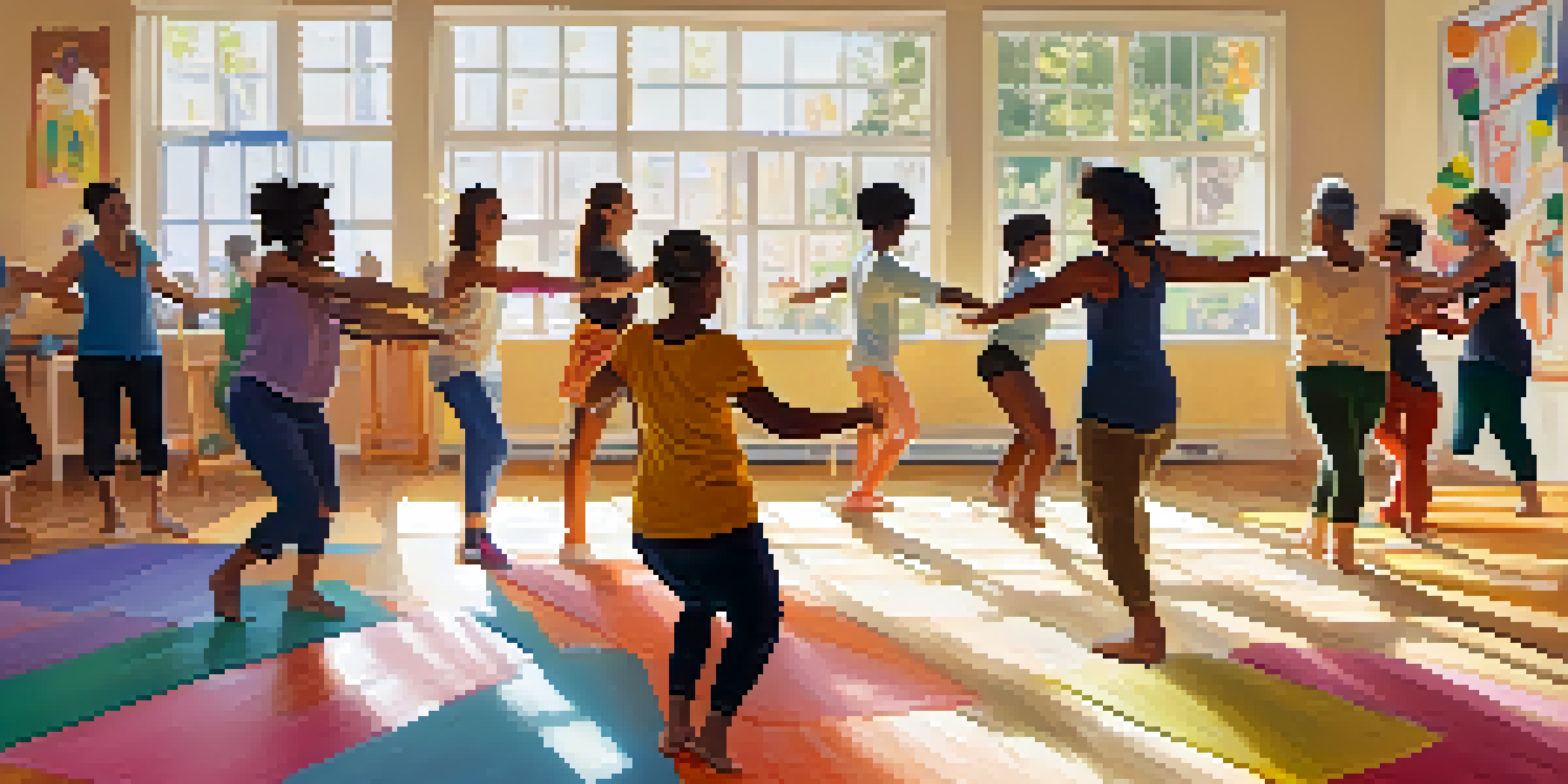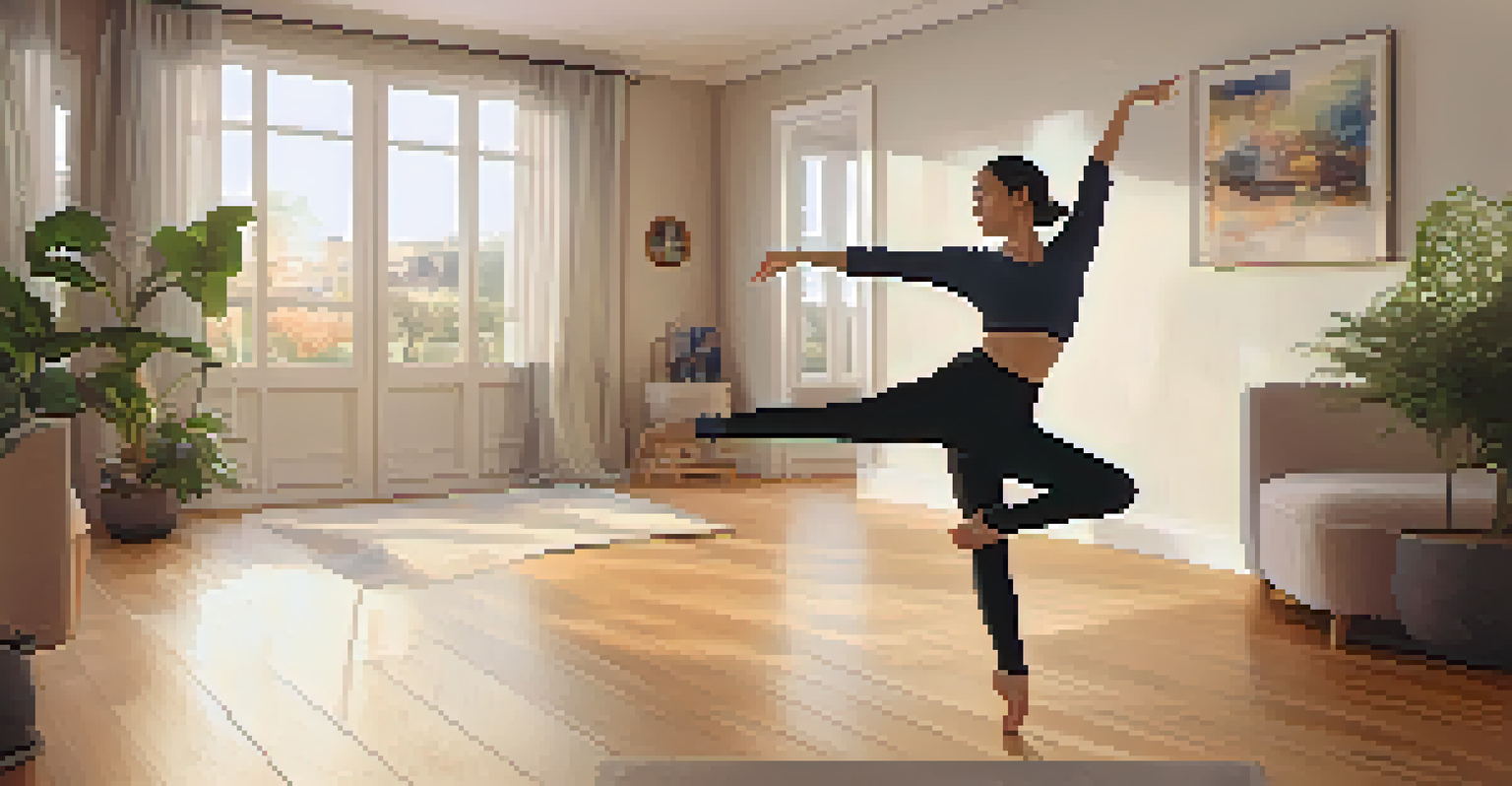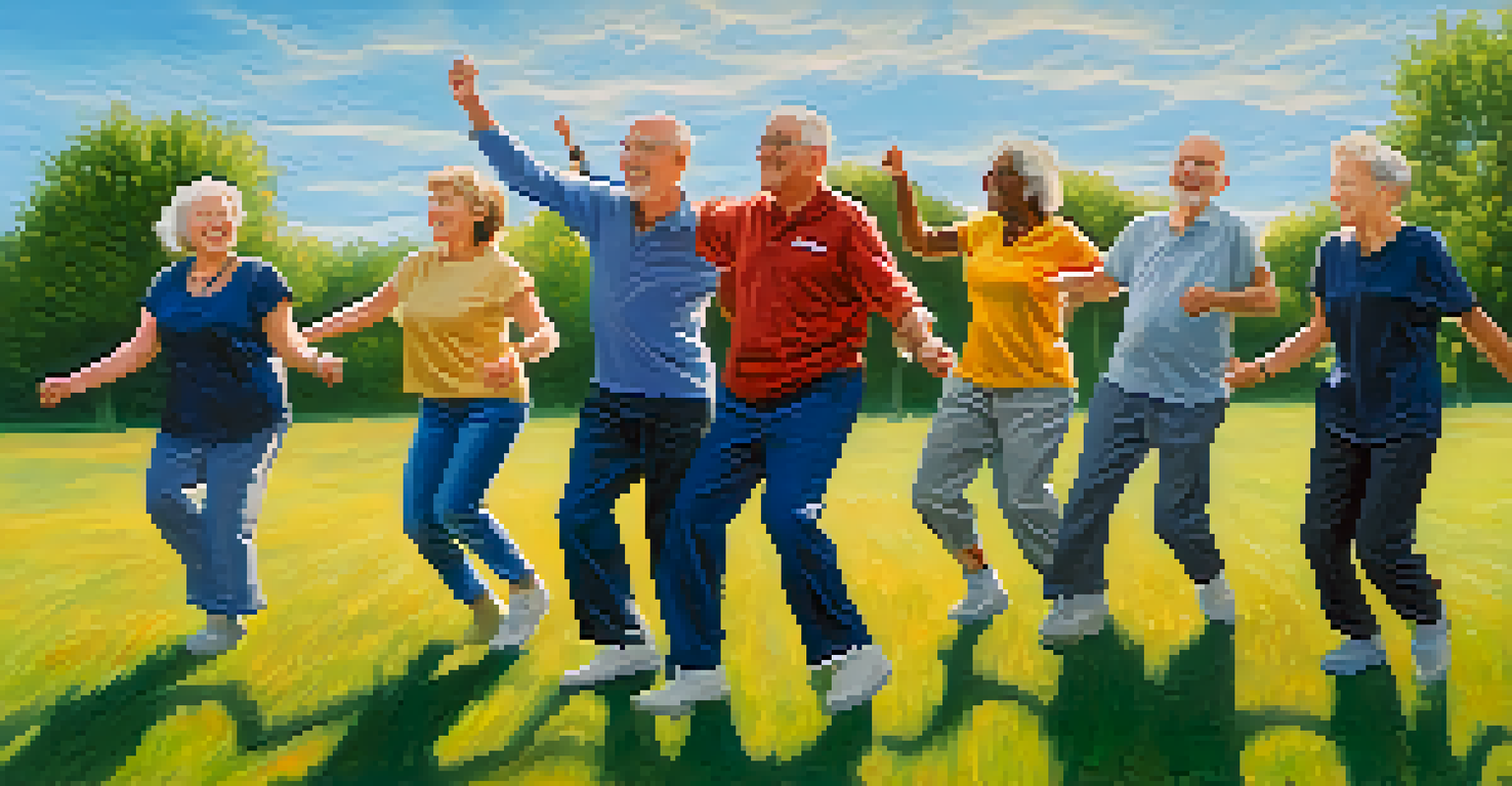The Therapeutic Effects of Dance on Depression Symptoms

Understanding Depression and Its Impact on Daily Life
Depression affects millions worldwide, manifesting in feelings of sadness, hopelessness, and a lack of energy. It can turn even the simplest tasks into monumental challenges, making everyday life feel overwhelming. Those struggling with depression often find themselves isolated, as social interactions can become daunting and exhausting.
Dance is the hidden language of the soul.
The emotional weight of depression doesn’t just affect mental health; it can also lead to physical ailments, such as fatigue and changes in appetite. These symptoms can create a vicious cycle, where the lack of motivation leads to inactivity, which in turn exacerbates feelings of sadness. Understanding this cycle is key to exploring effective treatment options.
While traditional treatments like therapy and medication are invaluable, alternative therapies are gaining attention for their holistic benefits. Among these, dance therapy stands out, offering a creative outlet that engages both mind and body, opening the door to healing in a unique and joyful way.
How Dance Therapy Works to Combat Depression
Dance therapy combines movement with emotional expression, allowing individuals to explore their feelings in a safe environment. It taps into the body's natural rhythms, helping participants connect with their emotions and release pent-up stress. This form of therapy encourages self-exploration, promoting a deeper understanding of one’s thoughts and feelings.

Research shows that engaging in dance can trigger the release of endorphins, the body's natural mood lifters. These 'feel-good' hormones help reduce feelings of pain and increase pleasure, effectively lifting one's mood. Furthermore, the rhythmic movements in dance can enhance overall emotional and physical well-being, making it a powerful tool against depression.
Dance Therapy Boosts Mental Health
Engaging in dance therapy provides a creative outlet that helps alleviate symptoms of depression through movement and emotional expression.
Group dance therapy sessions foster a sense of community and support, crucial for those battling depression. The shared experience of moving together can reduce feelings of isolation and increase socialization, which is vital for emotional health. This collective energy can be incredibly uplifting, creating bonds that may help individuals feel less alone in their struggles.
The Science Behind Dance and Mood Enhancement
Several studies have documented the positive effects of dance on mental health, particularly its role in alleviating symptoms of depression. For instance, a study published in the Journal of Clinical Psychology found that participants who engaged in regular dance therapy reported significant reductions in depressive symptoms. This research underscores dance's potential as an adjunct therapy for depression.
To be yourself in a world that is constantly trying to make you something else is the greatest accomplishment.
Moreover, dance can improve cognitive functions, which may also influence mood. When we dance, we engage multiple areas of the brain, enhancing coordination, memory, and focus. This stimulation can lead to improved self-esteem and a more positive self-image, both of which are crucial elements in combating depression.
The combination of physical activity, creative expression, and social interaction makes dance a multifaceted approach to mental health. It not only addresses the symptoms of depression but also promotes a holistic sense of well-being, encouraging individuals to find joy in movement and connection with others.
Different Styles of Dance Therapy for Depression Relief
Dance therapy encompasses various styles, allowing individuals to choose what resonates with them most. From ballet to hip-hop, each style offers unique benefits and can cater to different preferences and abilities. This versatility makes dance therapy accessible to a wide range of participants, regardless of their prior dance experience.
For instance, expressive dance focuses on free movement and improvisation, encouraging individuals to let go of inhibitions and express their emotions without judgment. This can be particularly liberating for those who struggle to verbalize their feelings. On the other hand, structured styles like ballroom dancing can instill a sense of discipline and achievement, promoting confidence and social interaction.
Community Supports Healing Journey
Group dance therapy fosters a supportive environment, reducing feelings of isolation and enhancing social connections for those battling depression.
Ultimately, the right style of dance therapy can vary from person to person, highlighting the importance of personalization in the healing process. By experimenting with different forms of dance, individuals can discover what truly resonates with them, making the therapeutic journey more effective and enjoyable.
Incorporating Dance into Your Routine for Mental Health
Incorporating dance into your daily routine doesn’t require formal classes or professional skill. Simply putting on your favorite music and moving freely in your living room can be a great way to lift your spirits. This spontaneous form of dance can provide a much-needed emotional release and help reduce feelings of anxiety and depression.
Consider setting aside a few minutes each day to dance, whether it's through structured classes, online tutorials, or just playful movement at home. The key is to find joy in the activity and let go of self-consciousness. Remember, there’s no wrong way to dance; it’s all about how it makes you feel.
Engaging with dance in community settings, such as local dance classes or workshops, can also enhance the experience. Being part of a group not only provides motivation but also fosters social connections, reminding us that we’re not alone in our struggles. These interactions can have a profound impact on mental health, creating a supportive network for healing.
Success Stories: Real-Life Examples of Dance Healing
Many individuals have shared their inspiring stories of how dance has helped them overcome depression. For example, a young woman named Sarah discovered dance during a particularly challenging time in her life. Initially hesitant, she found that moving to music allowed her to express emotions she had long suppressed and helped her reclaim her joy.
Similarly, a group of veterans struggling with PTSD found solace in a dance therapy program designed specifically for them. Through movement and rhythm, they learned to express their feelings, bond with one another, and foster resilience. These personal accounts highlight the transformative power of dance and its ability to create connections and inspire healing.
Variety of Dance Styles Available
With various dance styles to choose from, individuals can find the right fit for their personal healing journey, making therapy accessible and enjoyable.
These success stories serve as a testament to the effectiveness of dance therapy in combatting depression. They remind us that healing is possible and that sometimes the most unexpected avenues—like dance—can lead to profound personal growth and emotional restoration.
Conclusion: Embracing Dance as a Path to Better Mental Health
As we’ve explored, dance therapy offers a unique and engaging approach to alleviating symptoms of depression. By combining movement, emotional expression, and social interaction, it provides a holistic avenue for healing. Whether you’re a seasoned dancer or someone who has never danced before, there’s potential for everyone to benefit from this form of therapy.
Incorporating dance into your life can be a powerful step toward improved mental health. It encourages self-expression, boosts endorphins, and builds community—elements essential for overcoming the challenges posed by depression. So why not give it a try? You might just find that a little rhythm can go a long way in lifting your spirits.

Ultimately, embracing dance as a therapeutic tool can open doors to joy, connection, and emotional healing. As we continue to understand the multifaceted nature of mental health, dance stands out as a beautiful reminder that movement can bring us closer to ourselves and to others, paving the way for a brighter future.